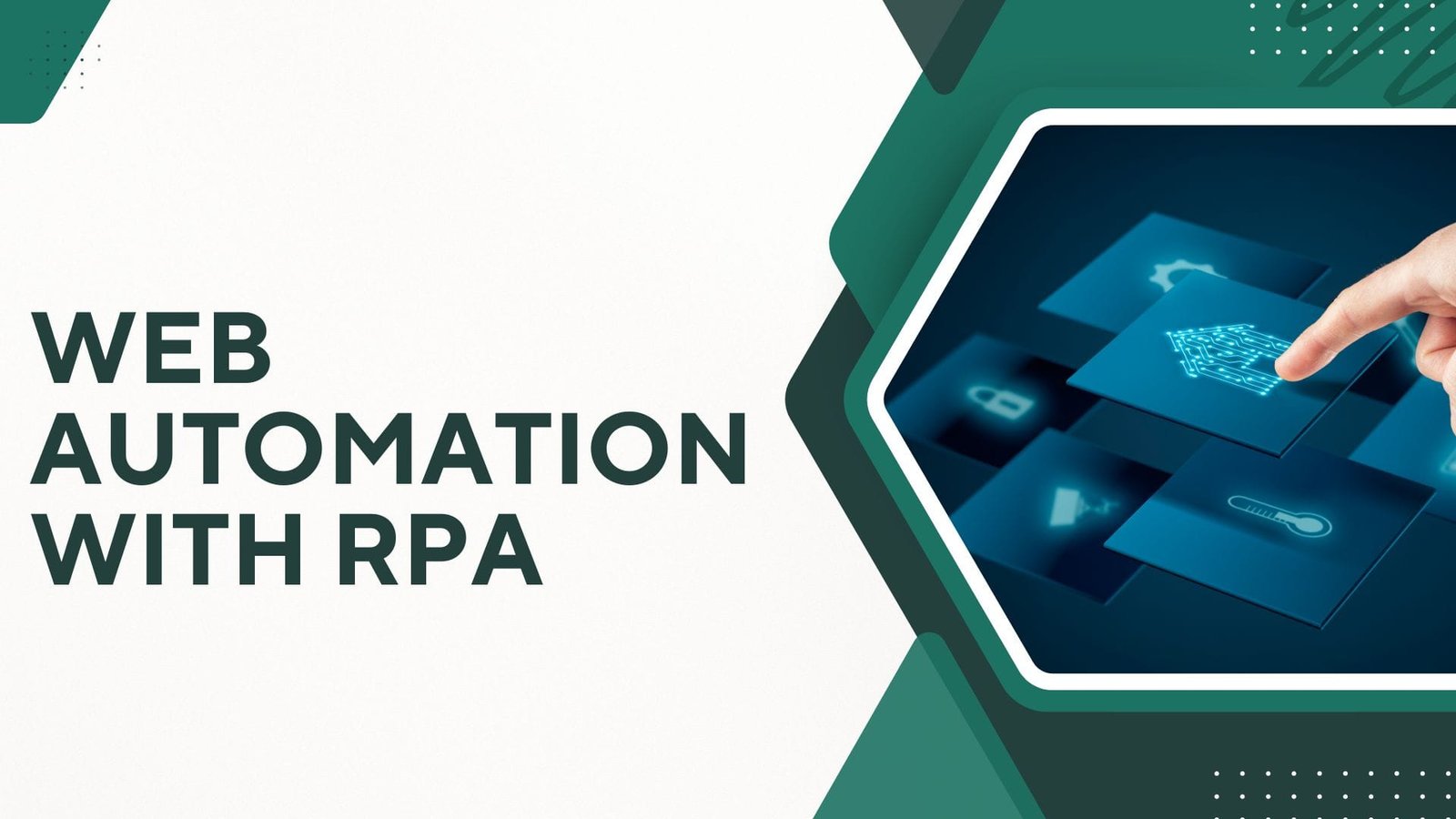Today, in a digital-first world, businesses depend on web interfaces, portals, browsers, and dashboards to perform mission-critical operations. However , manually engaging with these web services is slow, error-prone, and costly. Here’s where web automation services that use Robotic Process Automation (RPA) can help, automating repetitive browser tasks like data entry and complex reporting with an unbelievable degree of precision with the help of Web Automation Services.
Once required human input – clicks, keystrokes, or submitting forms for the computer world. More crucially, however, contemporary RPA guarantees deterministic execution with 100% playback accuracy on the web across screen sizes, browsers, and platforms. This transition has transformed how organizations consider scalability, compliance, and customer experience.
The Emergence of Realistic Web Automation
Web automation services have made huge strides beyond the brittle macro scripts they used to be. The bots of today have strong selectors, machine learning, and dynamic object detection to ensure consistent performance even if websites’ UI changes. More than 53% of organizations use RPA today, and another 19% will adopt it in the next two years, Deloitte reported.
Reports by companies revealed a 200–380% ROI in the first year of adoption, which makes it one of the best-performing digital transformation investments. And as the technology ages, accuracy is no longer a compromise — it’s a given.
The Importance of Precision in Web Automation
Whether it’s the banks filing compliance reports or the healthcare companies handling patient records, web interactions just have to be perfect. Errors as small as submitting inaccurate information or failing to click a confirmation button can lead to financial penalties or regulatory infractions.
That’s why the best RPA development practices nowadays revolve around creating bots that can make:
- Click and keystroke precision of 100%.
- Compatibility with Chrome, Firefox, and Edge.
- Algorithm and exceptional where stability is needed in dynamic/JS-heavy environments.
- Fault tolerance and automatic failovers.
This is a functionality that gives RPA the speed but also the trustworthiness of manual efforts.
Key Market Stats Driving Adoption
The requirement for web automation solutions is growing fast, with a return on investment and scalability fit for enterprise. The following statistics are telling:
- 92% of companies experience better compliance with automation.
- 86% say they are more productive since automating web-related work.
- 59% directly see how it cuts costs.
- RPA uptake is increasing rapidly, and 78 percent of the companies plan to increase investment in the automation industry for the next 3 to 4 years.
- The hyper-automation solutions industry is projected to reach $12.95 billion in 2024 to $31.95 billion by 2029, reflecting a 19.8% CAGR
Applications: When to Use Web Automation
- Data Entry and Migration
A worldwide media company such as Dentsu applied RPA to automate the migration of huge datasets between internal portals, which cut 125,000 hours and reached 100% accuracy of data. There is no longer a need for a human to key in information since bots are the ones now submitting web forms and selecting dropdowns accurately.
- Customer Onboarding
Banks and fintech companies employ bots to retrieve documents, pre-fill forms, and verify identities within KYC. Another organization experienced a 30% reduction in onboarding time and zero submission errors with web automation software.
- Compliance Reporting
Insurance companies pull data from government portals nightly, and out comes a structured compliance report, the product of zero human effort. Thus, 100% consistency is guaranteed, and more analyst hours are available a day.
- Customer Service Automation
When combined with chat’s conversational tools from a chatbot building software, web bots can automate some repetitive tasks like order tracking, form filling, and FAQs, thus dropping support volumes by 40% for leading e-commerce companies.
- Document Processing
RPA Automation Can Now Simplify PDF Management — read invoices, parse contracts, or upload standardized documents directly to web systems—all by RPA bots.
Core Technology: How RPA Ensures Web Accuracy
Selector-Based Automation
Bots ground operations in HTML element IDs, class names, and attributes. To handle small UI changes without fail, more advanced selectors use fuzzy matching or AI prediction.
Credential Vaults and Security
Bots authenticate to web applications using the strong credentials secured in a central repository. Every bot is registered with its own bot identifications, role-based access controls, and full audit trails—a standard in modern RPA development.
Error Handling and Retry Logic
Solid bots have built-in concepts like try-catch blocks, time-out management, and a mechanism to raise an alert on an error at the very least. Failures are logged and retried automatically or are escalated to human agents.
Advantages of Web Automation Using RPA
Using website automation services has such powerful and extensive advantages:
- Cost Saving: Process automation for form filling and web data scraping can help save 25–50% of manpower.
- Enhanced Compliance: Enable automated logs and traceability – 92% of establishments will raise the bar to ensure best compliance practices.
- Web scalability: Web bots work 24/7 and can scale instantly during bursts of high traffic.
- Speed and Productivity: What took hours now takes a few minutes—a bot doesn’t sleep or type the wrong thing or type anything at all.
- Employee Satisfaction: Users are freed from monotonous, boring web activities and can finally concentrate on the strategic activities at hand.
Best practices for implementation
To maximize RPA development and hyper-automation solutions, businesses would do well to consider a few best practices:
- Evaluation of Readiness for Automation: Pinpoint high-volume, rules-based processes with high ROI potential.
- Design Modular Bots: Build reusable components for common actions like sign-in, navigation, and error logging.
- Chatbot Integration: Work with a chatbot development company that allows you to build hybrid workflows where you can start a conversation and end with a bot running a web task for you.
- Keep a Center of Excellence (CoE): A centralized unit that takes care of the quality around the automation, handles exceptions, and launches improvements.
- Lock Down All Endpoints: Credential rotation, access audits, and endpoint protection should be standard for every bot that interacts with the web.
The Future of Web Automation: Orchestration at Scale
With the progress of AI and Agentic design, RPA is no longer siloed. It is part of a wider hyper-automation solution using AI models, decision engines, chatbots, and APIs that are all brought together to help power entire digital workflows.
Imagine a future where:
- A user requests an invoice summary from a chatbot.
- The chatbot initiates an RPA bot to enter a supplier portal.
- The bot downloads the appropriate document, parses the PDF, then emails a nice clean report, and all in under 30 seconds.
This isn’t some far-off fantasy — this is already playing out in automation-forward companies.
Final Thoughts
From pinpoint clicks to full workflow execution, precise web automation has been altering how businesses interact with the web. With battle-tested RPA development, ironclad exception handling, and out-of-the-box integrations with chatbot solutions, companies aren’t just cutting costs – they’re building agile, compliant, and scalable operations.
As the market goes faster and hyper-automation solutions mature, one thing is obvious: the winners will be the ones who get automation right.







Leave a Reply